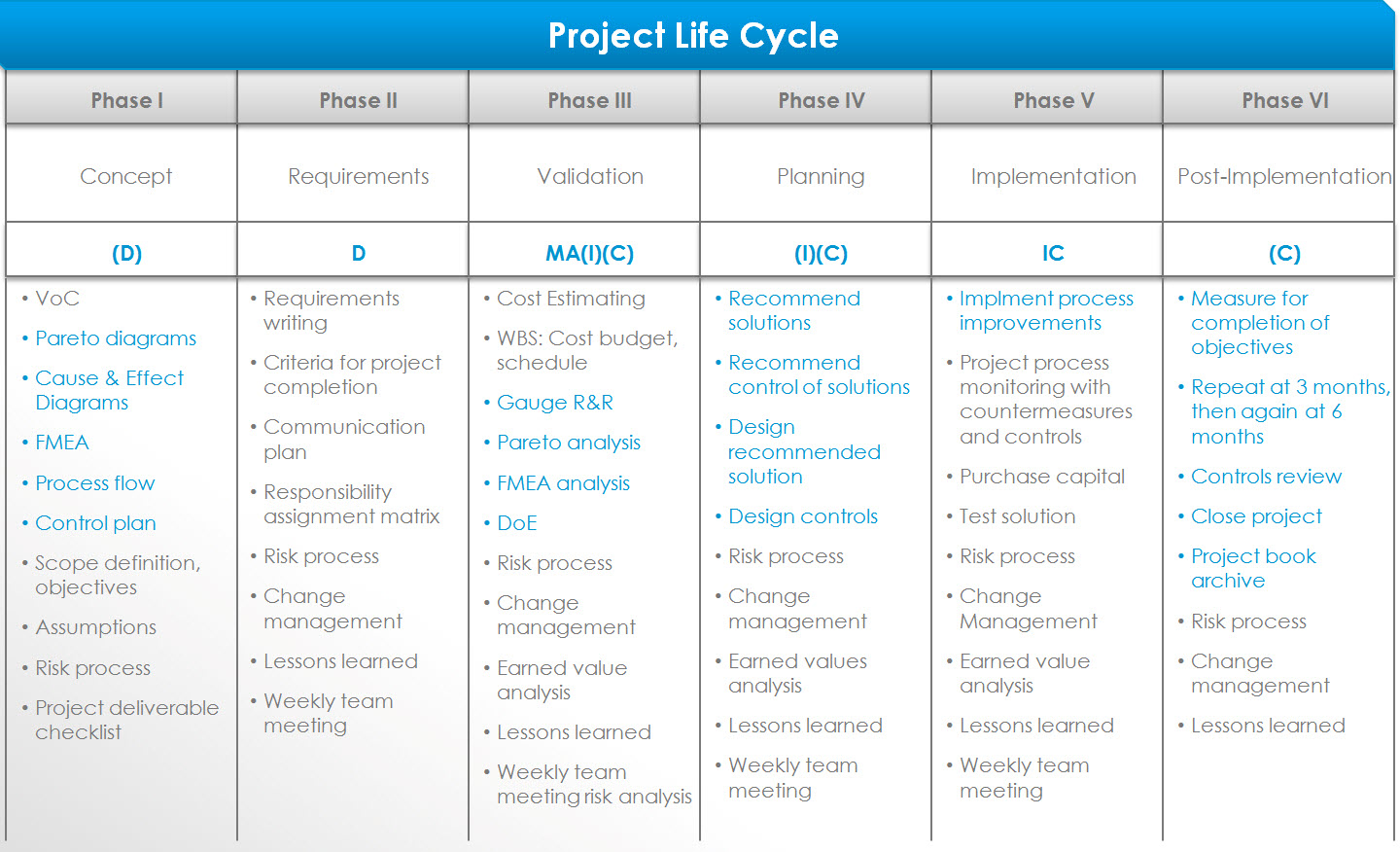- Verified qualifications give you a competitive edge
- Benefits of the Project Management Certification
- Exemplary integration of Six Sigma and Project Management
- PMP and Six Sigma – What you need as a project manager
Verified qualifications give you a competitive edge

Before entrusting a project manager with the task at hand, your clients or partners will expect objective and verified proof of competence, and rightly so. Because projects often carry high investment costs and great strategic significance.
The PMP® certification is suitable for all project managers and project team members, not just the project head. You’ll only be required to demonstrate
some project experience.
The successful implementation of Six Sigma in a project is the goal of any Six Sigma training. Certification combines theory and practice and provides for the successful implementation of a Six Sigma project. However, the success of such a project depends not only on the implementation of the Six Sigma content, but also on the success of the project management.
Become certified as a professional project manager. For the low cost of €948 plus MwSt., we will prepare you for the Project Management Professional (PMP)® certification. – Your path: IfP Düsseldorf
Benefits of the Project Management Certification
| For companies | For project managers/project team members |
|
|
Exemplary integration of Six Sigma and Project Management
To read the full article, click here.
Source: http://www.pmi.org/Knowledge-Center/~/media/PDF/Knowledge-Shelf/Zucker-2012.ashx, accessed on 13.09.2013
PMP and Six Sigma – What you need as a project manager

PMP is a must, but Six Sigma is to shine! . This makes it easy to summarise how both approaches complement each other. Only in combination do the two certificates provide the know-how needed to manage, lead and finally, successfully bring projects to conclusion.
As a project manager, you hold the threads together in projects, and you communicate, coordinate, make decisions and lead the project team and are responsible for the project result. The requirements could not be more different. Depending on the project, different technical skills may be needed, depending on the project team, new leadership challenges may arise, depending on the organisational structure, the communication may be different and, depending on the process, other methods may be used to lead the project to its destination.
But what should you bring to the table as a project manager in order to successfully lead projects? What do you need as a project manager, apart from soft skills and management skills?
The basis for successful project management is the PMP certification. The certificate offered by the Project Management Institute in the US is now one of the most widely used certifications worldwide. Especially in Germany, the PMP has become an important credential. No other European country has more PMP certificate holders than Germany. The content of the certification is provided by the PMBOK Guide (Project Management Institute, A Guide to the Project Management Body of Knowledge, (PMBOK® Guide) – Fifth Edition, Project Management Institute Inc., 2013). Now published in the 5th edition, it includes a standard procedural setup for the organisation of projects. The PMBOK Guide can be understood as a framework in which your project is embedded. However, it is not a standard solution for organising every project. Rather, you must work out which processes and which structures make sense for your own project and which do not. The advantage offered by the PMP is uniform project organisation throughout the entire project, which is recognised worldwide.
However, the PMBOK Guide offers little information about how a project can actually be implemented. The contents are general, so they can be implemented according to the PMI definition:
„[…] the knowledge and practices described are applicable to most projects and most of the time, and there is a consensus about their value and usefulness.”
Project Management Institute (2013)
Concrete methodological knowledge excludes the PMI. Rather, it indicates how and where specific tools can be integrated into the project. However, the PMI leaves the concrete design of the methods to the project managers.
On the other hand, the Six Sigma concept takes a different approach. Developed by Motorola in the late ’80s, it has become a widely used concept for process improvement. The goal of implementing Six Sigma is to minimise the probability of errors in a process. The name “Six Sigma” is given because of the statistical goal to make a 99.99966% error-free process. Originally developed for the manufacturing industry, Six Sigma’s field of application is no longer limited to production or industry. Since the start of the new millennium, Six Sigma has also found its way into the service industry and is now understood as an wide-reaching concept along a process chain.
The goal of Six Sigma certification is to provide project managers with a comprehensive method kit that is no longer limited to purely statistical methods. Product and process development methods as well as lean management methods along a process chain are now in the foreground.
By applying the Kano model and the Quality Function Deployment method, customer requirements can be addressed in order to generate services that are tailored to their needs. Processes can be presented and analysed using SIPOC, affinity analysis and FMEA. Value stream analysis and mapping implement the lean management approach, and the introduction of quality control charts ensures a certain level of error as part of a Six Sigma implementation. These are just a few examples from the extensive Six Sigma method kit.
In contrast to PMP, the Six Sigma approach leaves open the question of how the Six Sigma project can be organised. Although it follows the DMAIC cycle (Define – Measure – Analyse – Improve – Control), it gives the project managers an idea of what a concrete project organisation might look like, which processes should be used, and how it can be embedded into an existing organisational structure.
Successful project management hovers between these two approaches. The PMP provides the framework in which projects move about, while Six Sigma shows possibilities for the concrete design of a project. Only in combination does this result in successful project management. This means that PMP is a must, but Six Sigma is to shine!

